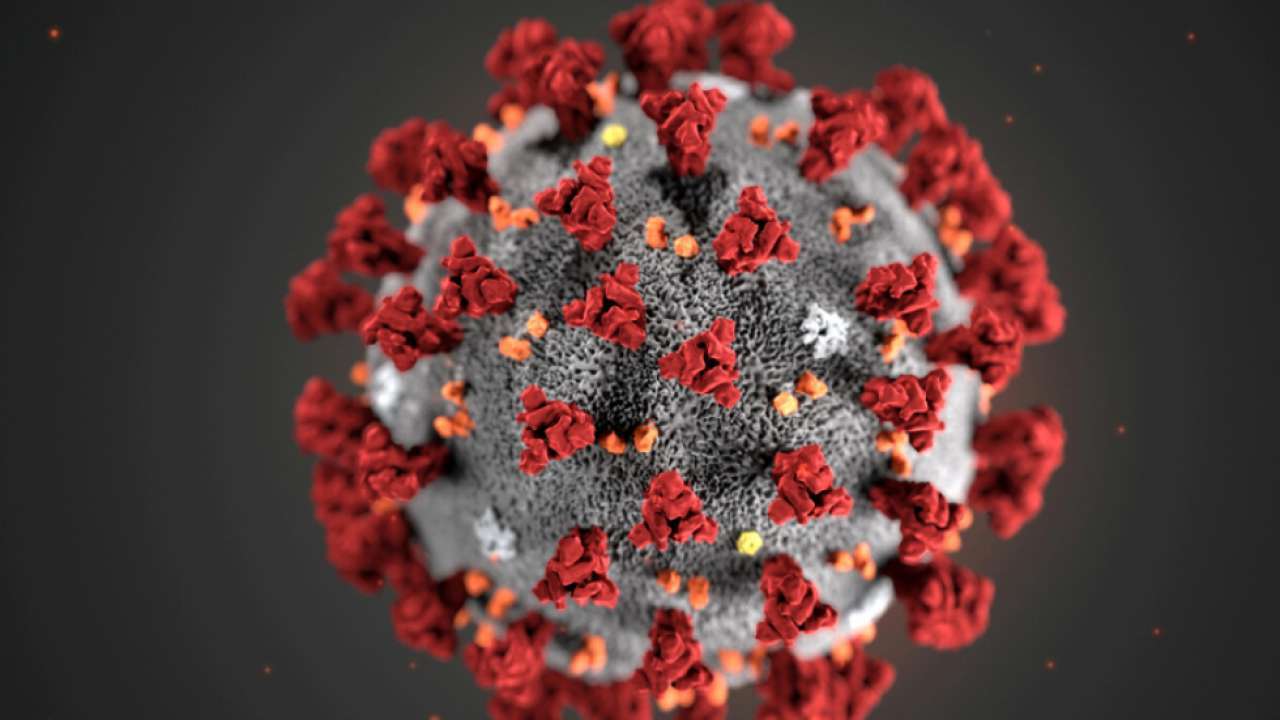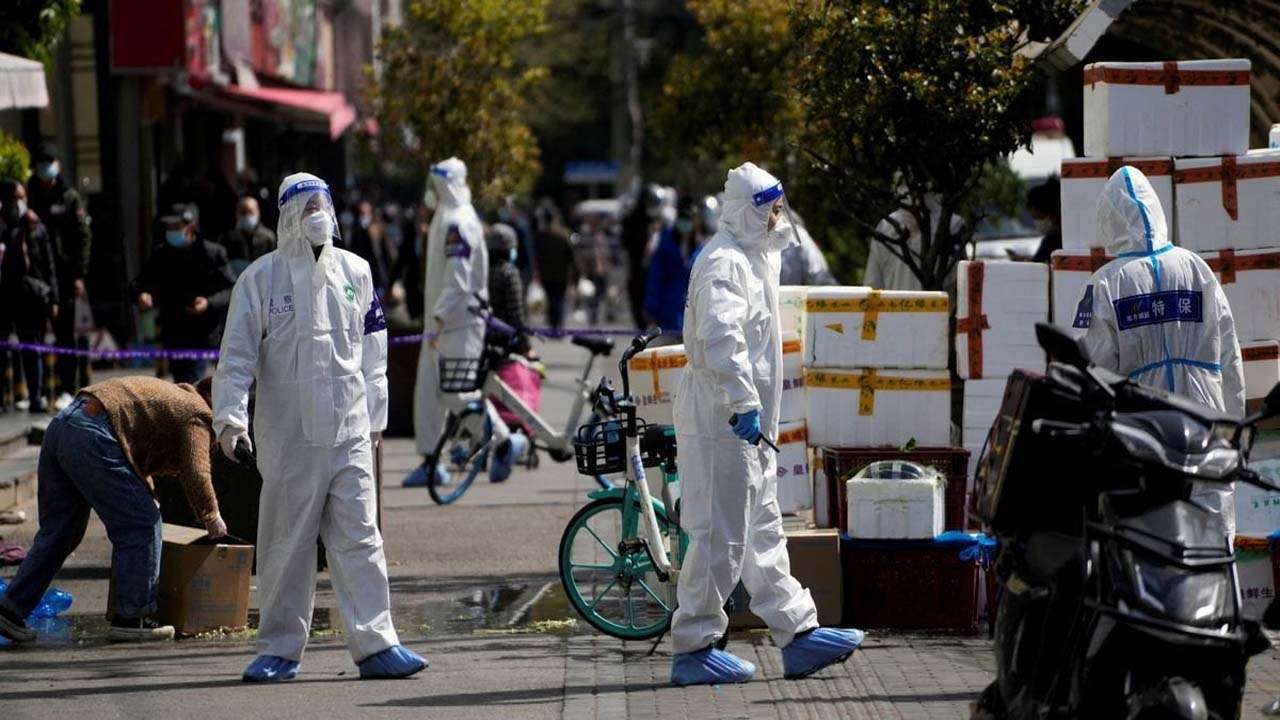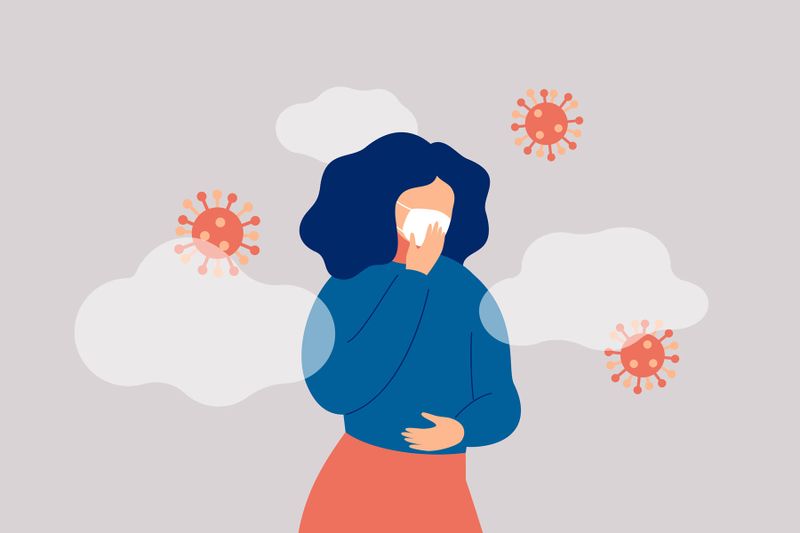Covid 4th wave: WHO warns about rising cases, says we may fail in the next phase of the pandemic. Know all the details about the new variant

Covid 4th wave: WHO warns about rising cases, says we may fail in the next phase of the pandemic. Know all the details about the new variant
The rising number of Covid-19 instances in various nations throughout the world has prompted the World Health Organization (WHO) to issue a new warning to everyone about the dangers of failing to follow Covid’s essential protocols. As new varieties are discovered, the WHO has stated that everyone must get vaccinated against the virus.
The organisation has asked everyone to stay watchful and keep working to stop the virus from spreading. Since South African scientists discovered Omicron BA.4 and BA.5, the situation has worsened. Recombinant viruses have been discovered in many other places of the world.
During a recent news conference, a WHO health expert stressed the importance of acting wisely. He asserted that we must first address the present if we want to safeguard our future.
“If we fail now, in the final lap, to get everyone vaccinated, keep diagnosing, and discover people who might benefit from therapy, we will absolutely fail in the next pandemic,” he added.
Notably, the WHO has stated that the virus is still spreading and that there is a possibility of introducing more lethal forms.
According to the CDC, as winter approaches for Southern Hemisphere countries, “there is a strong possibility of another surge of additional COVID infections,” according to the CDC. Because people are more prone to gather in large numbers indoors in lower temperatures, Covid-19 is known to spread quickly.
“With the virus still circulating, the risk of new and potentially more fatal varieties evolving persists,” warned WHO’s Africa Director, Dr Matshidisho Moeti, adding that “pandemic control measures are key to an effective response to a surge in infections.”
Coronavirus cases and deaths in Africa have reached their lowest levels since the epidemic began, according to the WHO. Following the Omicron outbreak, Covid cases “tanked” from 3,08,000 weekly infections to less than 20,000 in the past week, according to a report released on April 14.
Scientists in the United States have warned that a wave of cases involving the fast-spreading Omicron subvariant BA.2 is expected to hit the country.
With Covid cases reaching an all-time high across Europe, the country will shortly pass the one million death threshold.

Covid 4th wave: WHO warns about new mutant strain XE, a hybrid of three variants
After defeating the Omicron and Delta variants of Covid-19, we must now prepare for another Covid-19 type. The WHO has issued a warning concerning the second Covid mutant strain XE, which is a hybrid of two Omicron subvariants.
ACCORDING TO PRELIMINARY RESEARCH, the XE strain has a 10% growth rate advantage over the BA.2 variation.
The three novel recombinant strains are listed below.
Researchers have discovered three hybrid viruses thus far. There are three of them: XD, XE, and XF. The XD and XF variations are a mix of Delta and BA.1, whilst the XE variant is a cross between two Omicron subvariants.
The XD is the new designation for the French Delta x BA.1 lineage, according to a study by the UK Health Security Agency (UKHSA). It consists of a series of tens of sequences.
The XF version is a blend of a huge UK BA.1 and BA.2 lineage, whereas the XE variant is a UK Delta and BA.1 lineages hybrid.
More information on XE can be found in a recent WHO study. The WHO statement notes, “The XE recombinant was initially found in the United Kingdom on January 19, and >600 sequences have been reported and confirmed since then.” “Early estimates show a 10% community growth rate advantage over BA.2, although this discovery needs to be confirmed.”
Severity level of the three hybrid variants
According to famous virologist, Tom Peacock, hybrids with a single virus’s spike and structural proteins are more likely to behave like their parental virus. The XD is the most worrying of the three.
XE COVID Variant Spreads 10% Faster Than Omicron, Symptoms of The Virus So Far
The new Covid version XE has arrived in India, with the first instance being recorded in Mumbai, the financial hub. A 50-year-old South African costume designer who came to Mumbai on February 10 was found to have the XE strain. She didn’t show any symptoms at first.
Her sample was sent for genome sequencing, and it was found that she was infected with Omicron XE. According to the Maharashtra government, there has been an inflow of Omicron XE in Mumbai. The new version XE is a hybrid of two Omicron sub-variants, BA.1 and BA.2.
The infection is spreading swiftly in many countries, including the United Kingdom. Meanwhile, health professionals tried to play down fears about XE, saying that despite being around since January, the strain hasn’t caused a spike in cases like Omicron. Still, they did advise strict adherence to Covid-appropriate behaviour.
What are the Omicron XE symptoms?
1. In terms of symptoms, some patients infected with the Omicron XE strain may experience minor symptoms, while others may experience severe symptoms.
2. The virus’s severity is determined mainly by immunisation. Those who have been vaccinated may experience only minor side effects. Those who have not been vaccinated may experience severe symptoms.
3. Fever, sore throat, cough and cold, skin irritation, and gastrointestinal problems are some of the symptoms of the XE variety.
4. There is no evidence that the XE form of Covid-19 is more severe; all Omicron variations seem to be less harsh so far.
5. According to the UK Health Protection Agency, XE causes symptoms like runny nose, sneezing, and sore throat instead of the original strain, which causes fever, cough, and loss of taste and smell.
6. Initial evidence suggests that XE can propagate 10 per cent faster than other Omicron mutations.
7. The new XE variation is a mutant hybrid of two other Omicron variants, BA.1 and BA.2, and is responsible for the global spread of cases.
8. The new mutant is around 10% more transmissible than the BA.2 sub-variant of Omicron.
9. Even though there are now few cases of XE over the world, its high transmission potential suggests that it could become the dominant strain shortly.
10. XE (BA.1-BA.2) was first found in the United Kingdom on January 19, with less than 600 sequences reported and confirmed.
11. “Estimates for the launch day imply a community growth rate of 10% compared to BA.2, but further confirmation is needed,” it stated.
12. According to the UK’s Health Protection Agency, 637 cases of XE had been found in England as of March 22.
13. Thailand and New Zealand have both spotted the XE variant.

All About Coronavirus XE Variant
Just as things were returning to normal, rumours of the Covid-19 XE version began to circulate. At least three schools in Ghaziabad and Noida have closed their doors and switched to online classes in the last two days after kids and instructors tested positive for the coronavirus.
According to a source, daily Covid cases in the national capital Delhi reached 299 on Wednesday, with a positive rate of 2.49 per cent. The city has registered 501 new cases in the last two days, bringing the total number of active topics to 814.
Last Monday, the WHO issued a warning about a new mutation that may be more transmissible than any last Covid-19 type.
‘XE’ is a mutant hybrid of the two earlier Omicron variants, BA.1 and BA.2, which were widely distributed over the world. It was first found on January 19 in the United Kingdom, and a few hundred cases have been reported and confirmed since then.
XE has a 10 per cent edge in community growth rate over the BA.2 subvariant, which is already the most contagious.
“The XE recombinant (BA.1-BA.2) was first found in the UK on January 19,” according to a recent WHO study. “Since then, less than 600 sequences have been reported and confirmed.”
XE causes symptoms like runny noses, sneezing, and sore throats, compared to the original strain of the virus, which caused fever, coughing, and a loss of taste or smell.
The NHS included shortness of breath, fatigue, aching body, a headache, a sore throat, a blocked or runny nose, loss of appetite, diarrhoea, feeling nauseous, or being sick.
According to the agency, 637 cases of XE had been detected in England as of March 22.
Thailand and New Zealand have both recognised the XE variation. According to the WHO, anything data is needed before more can be said about the mutation.

Covid Spread Up By 500% In Last 15 Days Among Delhi Residents: Survey
According to a poll, the number of persons in Delhi-NCR reporting someone in their immediate social network contracting COVID has increased by 500% in the last 15 days.
Around 19% of respondents in Delhi-NCR who responded to a poll said they know someone who has had COVID in the recent 15 days.
According to LocalCircles, the firm that conducted the poll, the ‘COVID network prevalence’ has increased by almost 500% in the last 15 days.
According to the firm, 11,743 residents from all districts of Delhi and the NCR participated in the study.
“How many individuals (including children) in your close social network (family, friends, neighbours, colleagues) in Delhi-NCR have had COVID in the last 15 days?” the survey questioned. “No one in the last 15 days,” said most responders (70%) in response. “1 or 2,” “3-5,” and “couldn’t say” were the responses of 11%, 8%, and 11%, respectively.
Only 3% of people had someone in their immediate social network who had been infected with COVID in the previous 15 days, according to a similar inquiry the firm posed on April 2.
The survey findings come as the number of COVID cases in Delhi has increased dramatically.
According to data given by the local health department on Saturday, there were 461 new COVID-19 cases, accounting for 5.33 per cent of all those tested and two deaths.
According to LocalCircles, 67 per cent of the respondents were men, and 33 per cent were women.
It claimed that the poll was only performed with authenticated citizens who had to register with LocalCircles to participate.
Cases of Covid-19 have been reported in Delhi, Mumbai, Noida, and Gurugram.
According to daily health reports, Covid-19 instances have gradually increased in Delhi-NCR and Mumbai. On Wednesday, the daily Covid instances in the national capital Delhi reached 299, with a positive rate of 2.49 per cent. The city has registered 501 new cases in the last two days, bringing the total number of active cases to 814. However, hospital beds remain unoccupied. Only 43 of the 9,745 Covid beds in hospitals are currently occupied.
Daily coronavirus infections have also increased in Delhi’s neighbouring cities of Noida and Gurugram. After over 40 days, Gurugram recorded 128 new Covid-19 cases yesterday. The number of active cases has increased to 325. So far, the city has registered 729 Covid-19 instances.
Children in Noida are regularly afflicted with the coronavirus. Covid-19 was found in ten more children yesterday. In a week, 20 pupils had been infected with Covid-19.
One of the schools, which had 13 children and three instructors infected on Monday, has gone to an online mode until next week.
According to official data, 98,743 persons in Gautam Buddh Nagar have tested positive for COVID-19 since the pandemic began in March 2020, with 490 of them dying due to the virus.
Separately, on Wednesday, Mumbai had 73 new cases of Covid-19, the most in a single day since March 17 this year. According to the Brihanmumbai Municipal Corporation (BMC), the city has seen a modest increase in daily Covid case counts, with 23 instances on Monday and 52 on Tuesday. However, no Covid-related fatalities have been reported in the city in the last three days. The optimism rate in Mumbai has grown to 0.007%.
Mansukh Mandaviya, the union health minister, assessed the situation regarding an increase in Covid-19 cases and concerns about new XE variations. The health minister provided orders to increase the monitoring and surveillance of new variations and cases in a meeting with senior officials.

Covid-19 cases rise again: How can you keep your children safe in schools, home
Coronavirus is rising again in India, weeks after the Omicron cases receded. In the last 24 hours, Delhi has recorded 325 new cases, with a positive rate of 2.39 per cent. However, the increased number of cases reported at schools in and around Delhi NCR is a severe source of concern.
So far, no one has died due to the mounting numbers.
Because of the rapid increase in instances, some schools have reverted to online lectures and tests, while others have maintained physical attendance. Due to the pandemic, schools in and around Delhi have reopened after a two-year hiatus. When Omicron became a dominant variation, there was a recent spike in Covid-19 instances in late December and early January.
As fresh incidents emerge, parents and teachers may keep a few things in mind to keep children safe at school and at home. Dr Alok Agarwal, an Apollo Hospital physician, stated, “During the third wave of the pandemic, there were no cases of post-viral inflammatory syndrome in children, which was a huge relief. Since we are still in the development phase of children’s vaccines, we must verify that they are safe from coronavirus.”
DISTANCING TO BE PRACTICED IN SCHOOLS
With schools around the country now open, personnel must ensure that children, particularly tiny children in primary and middle school who have not yet been vaccinated in India, are seated at appropriate distances. While it is difficult to ensure that children in primary schools are always veiled, health experts believe that the separation could be crucial in preventing coronavirus from spreading among them. Staff must ensure that youngsters are separated by at least one, if not two, hand distances.
For the time being, health experts have advised schools to refrain from taking children to playgrounds since they could be a source of virus transmission when youngsters interact with one another.
MASK, SANITISING SHOULD BE FOLLOWED
Even if the government has become more lax on masking in the capital and certain other states, according to Dr Alok Agarwal, schools must ensure that children and their own employees are disguised. “Apart from vaccine, which is currently only approved for children over the age of 12,” he noted, “mask and sanitisers are the most powerful weapons we have against Covid-19.”
EAT HEALTHY AND AVOID JUNK FOODS.
Children should avoid eating junk food from open locations, which could be a source of coronavirus transmission. While the symptoms in youngsters have looked to be modest so far, experts do not rule out the possibility that they can become more severe in the future if new variants continue to emerge and we get complacent.
As heatwaves reach north India, doctors encourage parents and schools to keep youngsters hydrated.
“To boost their immunity, parents should give their children anti-oxidants like turmeric or curcumin, which is an extract of turmeric that comes in pill and liquid form. We need not just worry about Covid-19 but other viruses as well,” Dr Agarwal added.
There have been reports from Australia that a new phenomenon known as super-cold has evolved after the lockdown was released, and people began to come out of their houses after a nearly two-year hiatus. This super-cold includes symptoms that are similar to the ordinary cold, and health experts believe it is caused by the immune system colliding with other viruses after spending several years indoors.
While Covid-19 has impacted people worldwide, children have mostly been spared, and if more cases emerge, these steps may help to guarantee that the issue does not worsen.
Coronavirus is rising again in India, weeks after the Omicron cases receded. In the last 24 hours, Delhi has recorded 325 new cases, with a positive rate of 2.39 per cent. However, the increased number of cases reported at schools in and around Delhi NCR is a severe source of concern.
Because of the rapid increase in instances, some schools have reverted to online lectures and tests, while others have maintained physical attendance. Due to the pandemic, schools in and around Delhi have reopened after a two-year hiatus. When Omicron became a dominant variation, there was a recent spike in Covid-19 instances in late December and early January.
As fresh incidents emerge, parents and teachers may keep a few things in mind to keep children safe at school and at home. Dr Alok Agarwal, an Apollo Hospital physician, stated, “During the third wave of the pandemic, there were no cases of post-viral inflammatory syndrome in children, which was a huge relief. Since we are still in the development phase of children’s vaccines, we must verify that they are safe from coronavirus.”
Covid 4th wave: Will rising cases in Shanghai affect India?
While India is lifting its guard following a significant drop in Covid-19 cases, China is enacting one of its tightest lockdown measures in response to a surge in infections caused by the Omicron BA.2 sub-variant. Parts of Asia and Europe are experiencing an unexpected increase in cases.
And in India, this scenario has sparked fears of a possible fourth wave of the pandemic. China is fighting its greatest Covid outbreak since the 2019 Wuhan pandemic, which decimated the city and surrounding areas of Hubei province. Due to increasing infections, Shanghai, China’s financial capital, has enforced a two-phase lockdown.
In Shanghai, which has a population of 26 million people, a lockdown will be implemented in the city’s first half for four days, followed by limitations in the remaining half of the city for another four days. The goal is to undertake effective Covid testing and bring the world’s largest virus outbreak under control.
Residents of Shanghai have been advised to stay at home throughout the two-phase lockdown, and required deliveries will be left at checkpoints to guarantee no interaction with the outside world. All non-essential offices and companies will be shuttered, and public transportation will be suspended.
What is the condition in India?
On March 31, India reported 1,225 new Covid cases, 28 deaths, and 1,594 recoveries.
India recorded 1,761 new Covid-19 cases on March 20, the lowest single-day total in nearly two years.
India produced only 0.21 per cent of global cases in the week ending March 15, with 3,536 average new cases reported.
In India, cases are dropping after the third wave, which is in stark contrast to China and other countries.
Masks are no longer required in Mumbai, and the BMC will not levy a fine if they are not worn in public.
According to the above Health Ministry data and expert opinions, the risk of a new rise is extremely low, at least in the coming months.
WHO officials cautioned, however, that Omicron may not be the last Covid variation and that the next strain could be more contagious.
Concern has grown due to the new wave in China, Southeast Asia, and certain European countries.
More than 100 Covid-19 cases have been reported in Delhi in the first week of April.
This report is alarming because the number of Covid-19 cases in the national capital has previously remained below 100.
Rajesh Bhushan, the Union Health Secretary, had addressed letters to states and UTs advising them not to relax their watch.






